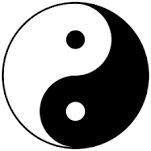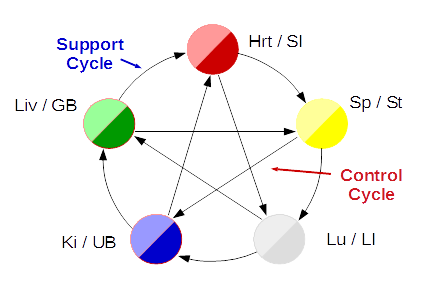In order to understand what Traditional Chinese Medicine can treat it is helpful to understand a little about how Chinese Medicine views the body and disease.
Traditional Chinese Medicine (TCM) is a separate paradigm to Western Biomedicine rather than treating disease as defined by Western Medicine it works by addressing patterns of disharmony within the body. Disharmony in TCM refers to the relative balance of forces starting from the most primary Yin and Yang.
The Chinese characters for Yin and Yang refer to the dark and sunny side of a hill and that as the sun passes over the shaded side becomes sunny while the sunny becomes shaded. This is an example of natural harmonious transformation. In a person when natural process or balance of Yin Yang is disrupted illness can arise.
Yin and Yang are often described as a set of correspondences:

opposite but complementary
qualities, Each contains the seed of
the other and can transform from
one state to the other.
| Yang | Yin |
| Light | Dark |
| Sun | Moon |
| Activity | Rest |
| Rising | Falling |
| Hot | Cold |
| Outer | Inner |
| Dry | Moist |
Structures and Substances
Substances and tissues of the body are also classified in relation to Yin Yang and each other, as an example Qi (functional energy) is Yang relative to Xue (Blood) and patterns of disharmony between Qi and Xue will create their own set of signs and symptoms. There are five vital substances in TCM Jing (Essence), Qi (functional energy), Xue (Blood), Jin (thin fluids) and Ye (thick fluids).
The Organs
The Organs of TCM are not the same as Western Biomedical organs though they usually have some functional overlap. In some respects it is unfortunate that translated terms became in common use by practitioners.The organs in TCM also include the acupuncture meridian and have inter-relationships not understood by Western Medicine.
There are ten main organs which form Yin Yang pairs five Yin and five Yang.
| Yin | Yang |
| Heart | Small Intestine |
| Liver | Gallbladder |
| Lungs | Large Intestine |
| Spleen | Stomach |
| Kidneys | Urinary Bladder |
TCM has a continuous practice and recorded history of over three thousand years, Over that time it has refined its understanding of disharmonies and imbalances that can occur within or between the organs, blood vessels, substances and meridians. These disharmonies are recognized by the signs and symptoms they produce within the person. Traditional Chinese Medical treatment is aimed at correcting these disharmonies thus resolving the signs and symptoms.
